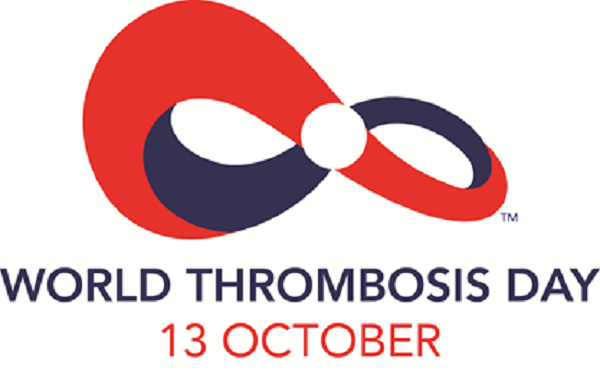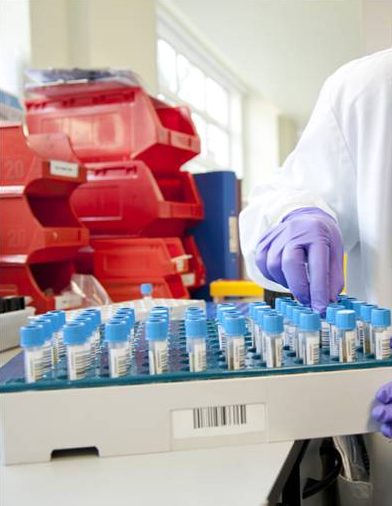Did You Know World Thrombosis Day was on 13th October?
What is World Thrombosis Day?
World Thrombosis Day (WTD), a campaign of the International Society on Thrombosis and Haemostasis, focuses attention on the often overlooked and misunderstood condition of thrombosis.
WTD seeks to increase global awareness of thrombosis, including its causes, risk factors, signs/symptoms and evidence-based prevention and treatment. Ultimately, the campaign strives to reduce death and disability caused by the condition and supports the World Health Assembly’s global target of reducing premature deaths by non-communicable disease by 25% by 2025, as well as the World Health Organization’s global action plan for the prevention and control of non-communicable diseases between 2013 and 2020.
WTD takes place every year on 13th October, the birthday of Rudolf Virchow who was a pioneer in the pathophysiology of thrombosis. Virchow was an inspired German physician, pathologist, biologist and anthropologist, who developed “Virchow’s triad - the three risk factors for blood clots - sticky blood, damaged vein walls and reduced blood flow in veins due to immobility. These are the three factors that lead to deep vein thrombosis and pulmonary embolism. The major cause of deep vein thromboses and pulmonary embolism is admission to hospital. We use the term “hospital-acquired thrombosis” for any DVT/PE developing in hospital or for 90 days afterwards. Both King’s and Guy’s & St Thomas’ provide national and international leadership in this area. Indeed NHS England leads the world in its prevention of hospital-acquired blood clots, and the death rate due to pulmonary embolism has dropped by 8% since all English hospitals adopted mandatory prevention.
Why is Thrombosis Awareness Important?
Thrombosis kills one in four people worldwide each year and is the leading cause of global death and disability. It is also the underlying origin of the top three major cardiovascular killers: heart attack, stroke and venous thromboembolism (VTE). A condition that must not be ignored, thrombosis awareness around the world is limited, with most adults not realizing that blood clots can be prevented. Further, VTE awareness is virtually non-existent, providing the opportunity to elevate understanding and focus on prevention and empowerment to reduce unnecessary deaths.
For more information or to register as a campaign partner visit:
Or contact Dr. Beverley Hunt at Beverley [dot] Hunt [at] gstt [dot] nhs [dot] uk
Thrombosis diagnostics in Viapath
There numerous reasons why someone can have sticky blood, damaged blood vessels or reduced blood flow and patients with more than one of the risk factor categories are at an increased risk of thrombosis. One of the roles of diagnostic laboratories is to assist in diagnosis of the presence of a thrombosis when patients show symptoms of deep vein thrombosis or pulmonary embolism. This is done by measuring a substance that is produced when the body is trying to destroy the clot, called D-dimer. If the result is normal, the patient is experiencing their symptoms for a different reason, but if the level is high, doctors know they need to get medical imaging tests done, such as ultrasound, to see the clot itself so that they can make informed decisions about treatment.
Amongst the reasons for having sticky blood is a group of disorders called thrombophilias where patients have a genetic abnormality in one of the proteins that regulate blood clotting. Viapath’s Haemostasis & Thrombosis Laboratories at Guy’s & St. Thomas’ Hospitals are the largest of their kind in the UK and perform thousands of specialised tests a year that check which of the proteins are present at lower levels than normal or are not functioning properly. If an abnormality is found, the laboratories can also look for the exact change in the DNA that caused the abnormality. Antiphospholipid syndrome is an acquired thrombophilia because the cause of sticky blood is not genetic but because patients make abnormal antibodies that cause thrombosis. There is a different set of specialist tests that detect these antibodies.
Viapath’s Diagnostic and Molecular Haemostasis and Thrombosis Laboratories at Guys & St. Thomas’ Hospitals are recognised nationally and internationally as expert centres for these specialist tests, and Viapath’s Blood Sciences Laboratory at King’s College Hospital also performs some of these tests.
The main treatment for thrombosis is anticoagulant therapy to thin blood and another set of tests are used in the laboratories to check that levels of the drugs are not too high or low. Viapath’s laboratories at King’s are an expert centre for measuring levels of the newer anticoagulant drugs.
Contacts
Dr Gary Moore, Consultant Scientist, Diagnostic Haemostasis & Thrombosis, GSTT; gary [dot] moore [at] viapath [dot] co [dot] uk
Dr Mike Mitchell, Consultant Scientist, Molecular Haemostasis & Thrombosis, GSTT; mike [dot] mitchell [at] viapath [dot] co [dot] uk
Jacky Cutler, Operations Manager, Diagnostic & Molecular Haemostasis & Thrombosis, GSTT; jacqueline [dot] cutler [at] viapath [dot] co [dot] uk
Dr Paradzai Chitongo, Operations Manager & Lead Scientist, Blood Sciences/Haemostasis, KCH; paradzai [dot] chitongo [at] viapath [dot] co [dot] uk

